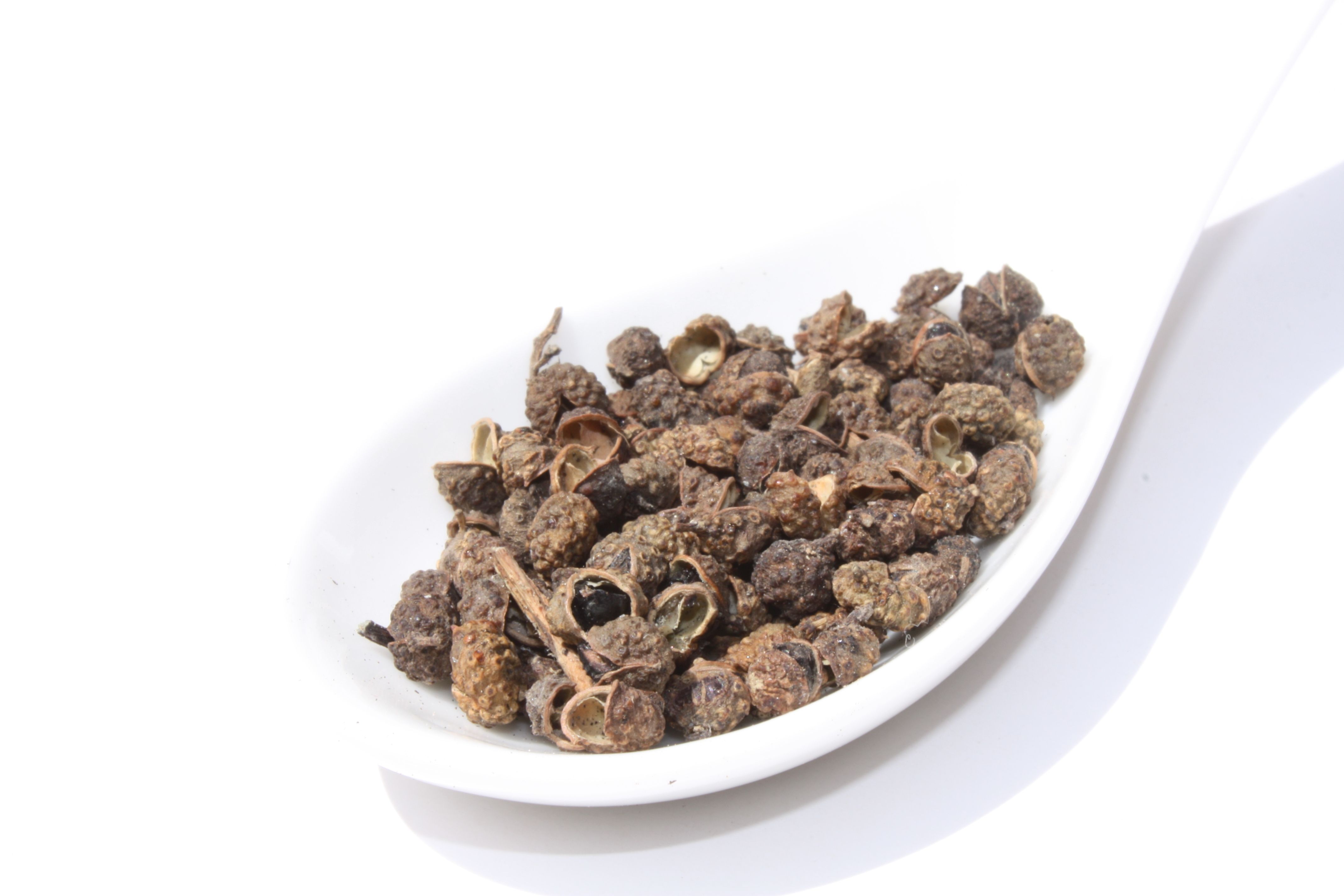New Development in Countercurrent Chromatography: Efficient Separation of Sanshools from Zanthoxylum bungeanum Oleoresin
Researchers achieve a breakthrough in countercurrent chromatography, successfully separating three types of sanshools from Zanthoxylum bungeanum oleoresin, paving the way for enhanced purification and isolation of valuable compounds.
Researchers at Beijing Technology and Business University in China have successfully developed a general separation strategy using countercurrent chromatography to separate three types of sanshools from Zanthoxylum bungeanum oleoresin. The findings of this study, led by Xueli Cao, were published in the Journal of Separation Science (1).
Sichuan pepper | Image Credit: © lefebvre_jonathan - stock.adobe.com

Countercurrent chromatography is a versatile separation technique used to separate mixtures of compounds based on their partitioning between two immiscible liquid phases. It operates on the principle of liquid-liquid partitioning, where the sample mixture is repeatedly partitioned between a stationary phase and a mobile phase. Unlike traditional chromatographic methods, countercurrent chromatography does not require a solid stationary phase or solid support. It offers advantages such as high sample loading capacity, low sample loss, and the ability to separate compounds with similar properties. By carefully selecting the solvent system and optimizing the operational parameters, countercurrent chromatography enables the efficient separation and purification of complex mixtures, making it a valuable tool in various scientific fields.
Sanshools are a group of amide compounds derived from Zanthoxylum bungeanum, a plant commonly known as Chinese prickly ash or Sichuan pepper. These compounds possess unique biological activities and are widely used in the food, pharmaceutical, and cosmetic industries. However, due to their similar structures, polarities, and dissociation constants, separating the different sanshool compounds using countercurrent chromatography has proven to be a challenge.
To overcome this obstacle, Cao and her team proposed a solvent-system-selection strategy to determine an appropriate solvent system for complete separation. Additionally, they established a separation procedure that incorporated multi-elution modes, allowing for the logical separation of similar compounds.
After extensive experimentation, the researchers identified a solvent system composed of n-hexane:ethyl acetate:methanol:water in a ratio of 19:1:1:5.67. This particular solvent system demonstrated favorable separation efficiency and resolution for the sanshool compounds.
By implementing a recycling elution mode to enhance separation resolution, the team successfully obtained three high-purity amide compounds from a 600 mg sanshool crude extract. The separated compounds were hydroxy-ε-sanshool (8.4 mg; purity: 90.64%), hydroxy-α-sanshool (326.4 mg; purity: 98.96%), and hydroxy-β-sanshool (71.8 mg; purity: 98.26%).
The solvent-system-selection strategy and separation procedure developed in this study have significant implications for countercurrent chromatography users, particularly those who encounter challenges when separating compounds with similar chemical properties. These strategies can serve as valuable guidance, especially for researchers new to countercurrent chromatography, facilitating the efficient separation and isolation of target compounds.
The successful separation of the sanshools from Zanthoxylum bungeanum oleoresin highlights the potential of countercurrent chromatography as a powerful tool for compound separation. The findings of this study contribute to the advancement of separation techniques and provide a foundation for further research in the field of natural product chemistry.
Further investigations and optimizations based on this strategy may lead to the isolation and purification of other complex mixtures.
Reference
(1) Han, T.; Ling, T.; Fu, Z.; Cao, X. Development of a general separation strategy by countercurrent chromatography using sanshools from Zanthoxylum bungeanum oleoresin as a case study. J. Sep. Sci. 2023. DOI: https://doi.org/10.1002/jssc.202300115
Analytical Challenges in Measuring Migration from Food Contact Materials
November 2nd 2015Food contact materials contain low molecular weight additives and processing aids which can migrate into foods leading to trace levels of contamination. Food safety is ensured through regulations, comprising compositional controls and migration limits, which present a significant analytical challenge to the food industry to ensure compliance and demonstrate due diligence. Of the various analytical approaches, LC-MS/MS has proved to be an essential tool in monitoring migration of target compounds into foods, and more sophisticated approaches such as LC-high resolution MS (Orbitrap) are being increasingly used for untargeted analysis to monitor non-intentionally added substances. This podcast will provide an overview to this area, illustrated with various applications showing current approaches being employed.
Study Explores Thin-Film Extraction of Biogenic Amines via HPLC-MS/MS
March 27th 2025Scientists from Tabriz University and the University of Tabriz explored cellulose acetate-UiO-66-COOH as an affordable coating sorbent for thin film extraction of biogenic amines from cheese and alcohol-free beverages using HPLC-MS/MS.
Multi-Step Preparative LC–MS Workflow for Peptide Purification
March 21st 2025This article introduces a multi-step preparative purification workflow for synthetic peptides using liquid chromatography–mass spectrometry (LC–MS). The process involves optimizing separation conditions, scaling-up, fractionating, and confirming purity and recovery, using a single LC–MS system. High purity and recovery rates for synthetic peptides such as parathormone (PTH) are achieved. The method allows efficient purification and accurate confirmation of peptide synthesis and is suitable for handling complex preparative purification tasks.







